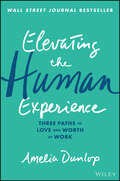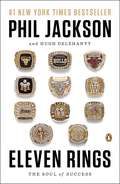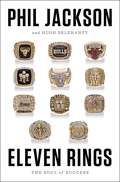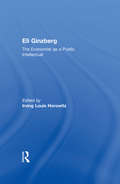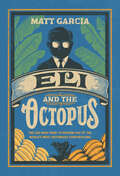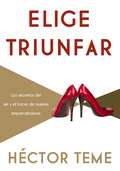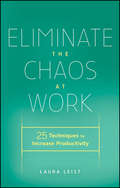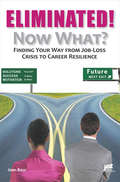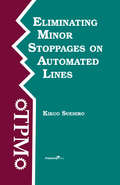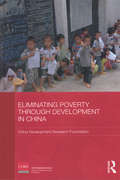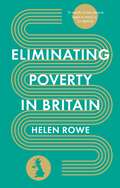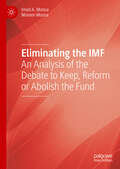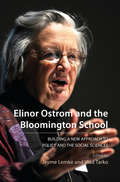- Table View
- List View
Elevating the Human Experience: Three Paths to Love and Worth at Work
by Amelia DunlopHave you ever struggled to feel worthy at work? Do you know or lead people who do? When Amelia Dunlop first heard the phrase "elevating the human experience" in a leadership team meeting with her boss, she thought, "He is crazy if he thinks we will ever say those words out loud to each other much less to a potential client." We've been conditioned to separate our personal and professional selves, but work is fundamental to our human experience. Love and worth have a place in work because our humanity and authentic identities make our work better. The acknowledgement of our intrinsic worth as human beings and the nurturing of our own or another's growth through love ultimately contribute to higher performance and organizational growth. Now as the Chief Experience Officer at Deloitte Digital, a leading Experience Consultancy, Amelia Dunlop knows we must embrace elevating the human experience for the advancement and success of ourselves and our organizations. This book integrates the findings of a quantitative study to better understand feelings of love and worth in the workplace and introduces three paths that allow individuals to create the professional experience they desire for themselves, their teams, and their clients. The first path explores the path of the self, an inward path where we learn to love ourselves when we show up for work, and examines the obstacles that hinder us. The second path centers around learning to love and recognize the worth of another in our lives, adding to the worth we feel and providing a source of meaning to our lives. The third path considers the community of work and learning to love and recognize the worth of those we meet every day at work, especially for those who may be systematically marginalized, unseen, or unrepresented. Drawing on her own personal journey to find love and worth at work in her twenty-year career as a management consultant, Amelia also weaves together insights from philosophers, theologians, and sociologists with the stories of people from diverse backgrounds gathered during her research. Elevating the Human Experience: Three Paths to Love and Worth at Work is for anyone who has felt the struggle to feel worthy at work, as well as for those who have no idea what it may feel like to struggle every day just to feel loved and worthy, but love people and lead people who do. It’s a practical approach to elevating the human experience that will lead to important conversations about values and purpose, and ultimately, meaningful change.
Eleven Rings
by Phil Jackson Hugh DelehantyDuring his storied career as head coach of the Chicago Bulls and Los Angeles Lakers, Phil Jackson won more championships than any coach in the history of professional sports. Even more important, he succeeded in never wavering from coaching his way, from a place of deep values. Jackson was tagged as the "Zen master" half in jest by sportswriters, but the nickname speaks to an important truth: this is a coach who inspired, not goaded; who led by awakening and challenging the better angels of his players' nature, not their egos, fear, or greed. This is the story of a preacher's kid from North Dakota who grew up to be one of the most innovative leaders of our time. In his quest to reinvent himself, Jackson explored everything from humanistic psychology and Native American philosophy to Zen meditation. In the process, he developed a new approach to leadership based on freedom, authenticity, and selfless teamwork that turned the hypercompetitive world of professional sports on its head. In Eleven Rings, Jackson candidly describes how he: Learned the secrets of mindfulness and team chemistry while playing for the champion New York Knicks in the 1970s Managed Michael Jordan, the greatest player in the world, and got him to embrace selflessness, even if it meant losing a scoring title Forged successful teams out of players of varying abilities by getting them to trust one another and perform in sync Inspired Dennis Rodman and other "uncoachable" personalities to devote themselves to something larger than themselves Transformed Kobe Bryant from a rebellious teenager into a mature leader of a championship team. Eleven times, Jackson led his teams to the ultimate goal: the NBA championship--six times with the Chicago Bulls and five times with the Los Angeles Lakers. We all know the legendary stars on those teams, or think we do. What Eleven Rings shows us, however, is that when it comes to the most important lessons, we don't know very much at all. This book is full of revelations: about fascinating personalities and their drive to win; about the wellsprings of motivation and competition at the highest levels; and about what it takes to bring out the best in ourselves and others.
Eleven Rings
by Phil Jackson Hugh DelehantyA New York Times bestsellerDuring his storied career as head coach of the Chicago Bulls and Los Angeles Lakers, Phil Jackson won more championships than any coach in the history of professional sports. Even more important, he succeeded in never wavering from coaching his way, from a place of deep values. Jackson was tagged as the "Zen master" half in jest by sportswriters, but the nickname speaks to an important truth: this is a coach who inspired, not goaded; who led by awakening and challenging the better angels of his players' nature, not their egos, fear, or greed.This is the story of a preacher's kid from North Dakota who grew up to be one of the most innovative leaders of our time. In his quest to reinvent himself, Jackson explored everything from humanistic psychology and Native American philosophy to Zen meditation. In the process, he developed a new approach to leadership based on freedom, authenticity, and selfless teamwork that turned the hypercompetitive world of professional sports on its head.In Eleven Rings, Jackson candidly describes how he:Learned the secrets of mindfulness and team chemistry while playing for the champion New York Knicks in the 1970sManaged Michael Jordan, the greatest player in the world, and got him to embrace selflessness, even if it meant losing a scoring titleForged successful teams out of players of varying abilities by getting them to trust one another and perform in syncInspired Dennis Rodman and other "uncoachable" personalities to devote themselves to something larger than themselvesTransformed Kobe Bryant from a rebellious teenager into a mature leader of a championship team.Eleven times, Jackson led his teams to the ultimate goal: the NBA championship--six times with the Chicago Bulls and five times with the Los Angeles Lakers. We all know the legendary stars on those teams, or think we do. What Eleven Rings shows us, however, is that when it comes to the most important lessons, we don't know very much at all. This book is full of revelations: about fascinating personalities and their drive to win; about the wellsprings of motivation and competition at the highest levels; and about what it takes to bring out the best in ourselves and others.
Eleven Rings
by Phil JacksonDuring his storied career as head coach of the Chicago Bulls and Los Angeles Lakers, Phil Jackson won more championships than any coach in the history of professional sports. Even more important, he succeeded in never wavering from coaching his way, from a place of deep values. Jackson was tagged as the “Zen master” half in jest by sportswriters, but the nickname speaks to an important truth: this is a coach who inspired, not goaded; who led by awakening and challenging the better angels of his players’ nature, not their egos, fear, or greed. This is the story of a preacher’s kid from North Dakota who grew up to be one of the most innovative leaders of our time. In his quest to reinvent himself, Jackson explored everything from humanistic psychology and Native American philosophy to Zen meditation. In the process, he developed a new approach to leadership based on freedom, authenticity, and selfless teamwork that turned the hypercompetitive world of professional sports on its head. In Eleven Rings, Jackson candidly describes how he: Learned the secrets of mindfulness and team chemistry while playing for the champion New York Knicks in the 1970s Managed Michael Jordan, the greatest player in the world, and got him to embrace selflessness, even if it meant losing a scoring title Forged successful teams out of players of varying abilities by getting them to trust one another and perform in sync Inspired Dennis Rodman and other “uncoachable” personalities to devote themselves to something larger than themselves Transformed Kobe Bryant from a rebellious teenager into a mature leader of a championship team. Eleven times, Jackson led his teams to the ultimate goal: the NBA championship—six times with the Chicago Bulls and five times with the Los Angeles Lakers. We all know the legendary stars on those teams, or think we do. What Eleven Rings shows us, however, is that when it comes to the most important lessons, we don’t know very much at all. This book is full of revelations: about fascinating personalities and their drive to win; about the wellsprings of motivation and competition at the highest levels; and about what it takes to bring out the best in ourselves and others. .
Eleven Rings: The Soul of Success
by Phil JacksonThis is the story of a preacher's kid from North Dakota who grew up to be one of the most innovative leaders of our time. In his quest to reinvent himself, Jackson explored everything from humanistic psychology and Native American philosophy to Zen meditation. This book is full of revelations: about fascinating personalities and their drive to win; about the wellsprings of motivation and competition at the highest levels; and about what it takes to bring out the best in ourselves and others.
Eli Ginzberg: The Economist as a Public Intellectual
by Irving Louis HorowitzThe world of Eli Ginzberg can readily be thought of as a triptych-a career in three parts. In his early years, Ginzberg's work was dedicated to understanding the history of economics, from Adam Smith to C. Wesley Mitchell, and placing that understanding in what might well be considered economic ethnography. His studies took him on travels from Wales in the United Kingdom to California in the United States. For example, the poignant account of Welsh miners in an era of economic depression and technological change remains a landmark work. His report of a cross country trip taken in the first year of the New Deal provides insight and evaluation that can scarcely be captured in present-day writings.The second period of his career corresponds to Ginzberg's increasing involvement in the practice of economics. He deals with issues related to manpower allocation, employment shifts, and gender and racial changes in the workforce. His writing reflects a growing concern for child welfare and education. In this period, his work increasingly focuses on federal, state and city governments, and how the public sector impacts all basic social issues. His work was sufficiently transcendent of political ideology that seven presidents sought and received his advice and participation.After receiving all due encomiums and congratulations for intellectual work and policy research well done, Ginzberg then went on to spend the next thirty years of his life carving out a place as a preeminent economist of health, welfare services, and hospital administration. It is this portion of his life that is the subject of Eli Ginzberg: The Economist as a Public Intellectual. What is apparent in Ginzberg's work of this period is his sense of the growing interaction of all the social sciences-pure and applied-to develop a sense of the whole. The contributors to this festschrift, join together to provide a portrait of a figure whose life and work have spanned the twentieth century, and yet pointed the way to changes in the twenty-first century. Eli Ginzberg from the start possessed a strong sense of social justice and economic equality grounded in a Judaic-Christian tradition. All of these aspects come together in the writings of a person who transcends all parochialism and gives substantive content to the often-cloudy phrase, public intellectual.Irving Louis Horowitz is Hanna Arendt Distinguished Professor Emeritus at Rutgers, the State University of New Jersey, where he has taught for over thirty years. He also serves as Chairman of the Board at Transaction Publishers. His writings include Radicalism and the Revolt Against Reason; Behemoth: Main Currents in the History and Theory of Political Sociology; and Taking Lives: Genocide and State Power.
Eli Lilly and Co.: Drug Development Strategy (A)
by Stefan Thomke Ashok Nimgade Paul PospisilDescribes how Eli Lilly and Co. tries to accelerate its new drug development process with the aid of "combinatorial chemistry"--a rapidly emerging and revolutionary approach to preclinical drug discovery. The product manager of a potential blockbuster migraine drug faces the decision of "racing" the drug to market or spending additional time to refine an already promising drug candidate. Focuses on: (1) the new drug development process with an emphasis on pre-clinical drug discovery; (2) radical innovations ("combinatorial chemistry") in the drug discovery process; (3) the managerial challenges of introducing such innovations into a large organization with multiple stakeholders; (4) the financial value of time-to-market; and (5) the changing competitive environment in the pharmaceutical industry.
Eli Lilly and Co.: Innovation in Diabetes Care
by Clayton M. ChristensenSummarizes Eli Lilly's history of innovation in its business, describing how the dimensions along which innovations have been made in the industry have changed. Lilly's innovation strategy has been to pursue ever higher performance products, while others in the industry have pursued more convenient products. At the time of the case, Lilly is contemplating offering services, not just products, to diabetic patients.
Eli Lilly and Co.: Manufacturing Process Technology Strategy--1991
by Steven C. Wheelwright Gary P. Pisano Jonathan WestOutlines the evolution of Lilly's corporate manufacturing strategy over the past decade. The corporate vice president of manufacturing must decide on the next phase of Lilly's strategy for the early 1990s, as well as to what extent and what role process development will play. Provides data outlining three different points in the product development process at which manufacturing process development might be initiated. Using learning curve concepts and data, students can estimate the economic costs and benefits (as well as organizational issues and challenges) associated with each. Illustrates process improvement's substantial impact in a capital-intensive industry, describes possible roles of manufacturing process technology in an industry that has viewed product R&D as its primary competitive advantage, illustrates phases through which manufacturing can evolve in pursuit of comparative advantage, and introduces students to a challenging and changing industry.
Eli Lilly and Co.: The Flexible Facility Decision--1993
by Gary P. Pisano Sharon RossiIn 1993, Eli Lilly is preparing to build manufacturing capacity for three new pharmaceutical products that it expects to launch in 1996. Management wrestles with a decision of whether to add specialized manufacturing capacity or flexible capacity. This question touches off a broad debate within the company about which strategy to follow for future facilities decisions. This case presents two alternatives (flexible and specialized plants) and describes the benefits and costs associated with each.
Eli Lilly--1998 (B): Emerging Global Organization
by Michael Y. Yoshino Thomas W. MalnightExamines major issues faced by Eli Lilly as it evaluates the appropriateness of a focused matrix organization with extensive use of cross-functional teams.
Eli Lilly: Developing Cymbalta
by Elie Ofek Ron LauferAnticipating the expiration of its Prozac patent, Eli Lilly has to make tough decisions regarding the development of its next-generation antidepressant drug. In particular, the company needs to decide whether to first establish that once-a-day dosing for Cymbalta (Duloxetine) is effective in treating major depressive disorder and only after launch get FDA approval for treating painful physical symptoms, or to first establish efficacy in treating pain and later get FDA approval for once-a-day dosing. The decision needs to take into account how Cymbalta can be differentiated in the marketplace vis-a-vis other antidepressants and the marketing challenges to getting adoption that the new drug will face. Lilly's new antidepressant team making this decision has several market research inputs on physicians and patients at its disposal.
Eli Lilly: The Evista Project
by Steven C. Wheelwright Matthew C. VerlindenDescribes the creation and operation of the initial two heavyweight teams for new drug development and launch. The primary focus is on one of the teams, Evista, although comparisons to the other team, Zyprexa, are included. Lilly must decide the next phase (postlaunch) for managing Evista's rollout.
Eli and the Octopus: The CEO Who Tried to Reform One of the World’s Most Notorious Corporations
by Matt GarciaThe poignant rise and fall of an idealistic immigrant who, as CEO of a major conglomerate, tried to change the way America did business before he himself was swallowed up by corporate corruption.At 8 a.m. on February 3, 1975, Eli Black leapt to his death from the 44th floor of Manhattan’s Pan Am building. The immigrant-turned-CEO of United Brands—formerly United Fruit, now Chiquita—Black seemed an embodiment of the American dream. United Brands was transformed under his leadership—from the “octopus,” a nickname that captured the corrupt power the company had held over Latin American governments, to “the most socially conscious company in the hemisphere,” according to a well-placed commentator. How did it all go wrong?Eli and the Octopus traces the rise and fall of an enigmatic business leader and his influence on the nascent project of corporate social responsibility. Born Menashe Elihu Blachowitz in Lublin, Poland, Black arrived in New York at the age of three and became a rabbi before entering the business world. Driven by the moral tenets of his faith, he charted a new course in industries known for poor treatment of workers, partnering with labor leaders like Cesar Chavez to improve conditions. But risky investments, economic recession, and a costly wave of natural disasters led Black away from the path of reform and toward corrupt backroom dealing.Now, two decades after Google’s embrace of “Don’t be evil” as its unofficial motto, debates about “ethical capitalism” are more heated than ever. Matt Garcia presents an unvarnished portrait of Black’s complicated legacy. Exploring the limits of corporate social responsibility on American life, Eli and the Octopus offers pointed lessons for those who hope to do good while doing business.
Elia Nuqul and the Making of a Middle Eastern Business Group (A)
by Geoffrey G. Jones Lana GhanemThe case is concerned with Elia Nuqul, the founder of Jordanian-based Nuqul Brothers, a large diversified business group. It shows how Nuqul, a Christian Palestinian whose family was forced to flee to Jordan after the creation of Israel in 1948, built a business in his new home, first in trading and later in consumer products such as hygienic paper mnaufacturing. The case shows the challenges of building such an entrepreneurial business in a developing region with high political instability. The case is positioned within the wider context of the regional conflict in Palestine and Israel, and it provides a vehicle for exploring the role and responsibility of entrepreneurs, if any, in such conflicts.
Elige triunfar: Los secretos del ser y el hacer de mujeres emprendedoras
by Héctor TemeNuestro mundo actual se distingue por la emancipación femenina. La mujer emprendedora entiende que la relación de esclavitud ya no se acepta y que la relación de dependencia no satisface; sin embargo, la relación de independencia no sirve. No obstante hay nuevos modelos para llegar a ser triunfadoras, lo cual es posible en una relación de interdependencia. Moviéndose juntas, viéndose crecer unas a otras, ayudándose más y más cada día. Disfrutando el éxito de la otra como propio, mientras se persiste en lograr el particular.* ¿Quieres ser una mujer triunfadora y todavía no lo logras?* ¿Te gusta lo que haces pero deseas hacerlo menos tiempo y sacarle el máximo provecho?* ¿Estás a punto de pasar al siguiente nivel, comprar tu casa, ganarte el bono máximo y necesitas herramientas?* ¿Trabajas mucho y ganas bien, pero no lo disfrutas?* ¿Has tenido que empezar de nuevo muchas veces?* ¿Te cuesta saber exactamente cómo hacerlo?Si la respuesta ha sido sí, entonces este libro es para ti.
Eliminate the Chaos at Work
by Laura LeistCreate office efficiency and business productivity with this helpful book. Eliminate the Chaos at Work increases your business productivity and peace of mind by showing you how to create streamlined information systems, processes and workflows. Laura's proven 25 techniques are easy to implement, realistic and results oriented. Using these techniques, you can take control over your time and information to create workable systems built to reflect how you think and process information. Eliminate the Chaos at Work breaks down the everyday organization and productivity challenges you face at work into four areas: time, paper and information management as well as managing all of the stuff in your office. You'll learn effective time and information management techniques including how to: Produce logical, user friendly information management systems to ensure information is organized and easily retrievable Schedule and manage meetings that aren't total time wasters Implement a system to process and follow up on e-mail Create an organized e-mail filing structure for easy retrieval De-clutter paper files, decide what can be stored, scanned, shredded or recycled Learn what paper management system will work best for you and how to create the filing structure Use the PAPERS method for maintaining efficient paper management systems Determine which task management system is right for your needs and how to manage your tasks and projects daily using the 20-minute rule Use the 10-step process to organize the stuff in your office Imagine working in an office where you feel in control and on top of things, instead of overwhelmed. Setup a comfortable workspace and make yourself and your team's office more productive, supported and in control with Eliminate the Chaos at Work.
Eliminated! Now What?
by Jean BaurTeaches you how to view your job loss as an opportunity, rather than a crippling dilemma.
Eliminating Minor Stoppages on Automated Lines
by Kikuo SuehiroStoppages of automated equipment lines adversely affect productivity, cost, and lead time. Such losses make decreasing the number of stoppages a crucial element of TPM. Kikuo Suehiro has helped companies such as Hitachi achieve unprecedented reduction in the number of minor stoppages. In this explicitly detailed book, he presents a scientific approach to determining the causes of stoppages and the actions that can be taken to diminish their occurrence.
Eliminating Poverty Through Development in China (Routledge Studies on the Chinese Economy)
by China Development Research FoundationIn recent years China has achieved impressive economic growth, and also made remarkable progress in human development. However, contemporary China is still faced with the great challenge of widespread poverty. This not only constitutes a barrier against China’s pursuit of sustainable economic growth, but also poses a potential threat to China’s attempts to construct a harmonious society in the future. This book, written by three renowned poverty-reduction experts under the aegis of the China Development Research Foundation - one of China’s leading think-tanks - and drawing on the research of over twenty of China’s top scholars in this field, examines China’s efforts to eliminate poverty through development. It analyses all of the key issues, providing a review of China’s past record in poverty alleviation, comparing this with the experiences of other countries, identifying the new characteristics and trends in poverty in recent years, and discussing the factors responsible. It assesses the objectives and success of the poverty alleviation policies adopted by the Chinese government in a comprehensive way, and puts forward suggestions for policy makers. Overall, this book is a valuable account of China’s own thinking on its problems of poverty, and the best ways to tackle it and achieve sustainable economic development.
Eliminating Poverty in Britain
by Helen RoweCan we really end poverty in Britain?Yes, we can.In this groundbreaking book, Helen Rowe brings together the latest research with stories from across Britain to show us that ending poverty in the twenty-first century is possible. She describes the effects of deprivation on our society, institutions, communities, families and individuals – down to their very DNA.By using a combination of compassion, focus and a plan, Rowe describes how we can end poverty in five years, without raising taxes. Her radical ideas are grounded in practical realities, as she reveals how ordinary processes can yield extraordinary results.This book has huge ramifications for Britain and every developed nation globally. It will force governments to face an issue that has been ignored for too long. After Covid-19, Brexit, war, austerity and the global financial crash, Britain deserves a more positive future. How do we create it? Eliminating Poverty in Britain has the answers.
Eliminating the IMF: An Analysis of the Debate to Keep, Reform or Abolish the Fund
by Imad A. Moosa Nisreen MoosaThis book offers a concise but thorough analysis of the International Monetary Fund reform debate. Since the advent of the Asian financial crisis in the late 1990s, a lengthy deliberation has ensued over whether the IMF should be reformed, abolished, or left as is. The authors approach this debate from a normative perspective while looking at arguments from all sides, as well as reflecting on the history, functions, and ideology of the IMF. This unique approach gives weight to the authors’ perspectives and their conclusion that the IMF ultimately does more harm than good. Written to analyze and contribute to the current IMF debate, this Palgrave Pivot is a must-read for scholars and policymakers invested in the conversation surrounding IMF reform.
Elimination Round: Screening Opportunities--Surfacing the Most Promising Innovation Opportunities
by Christian Terwiesch Karl T. UlrichOpportunity screening is the first step in the selection process that aims to identify exceptional innovation opportunities from the pool of opportunities you have collected. It's the qualification phase of the innovation tournament. According to the authors, an effective screening process must be efficient and accurate. This chapter outlines a three-round process for evaluating innovation opportunities to arrive at the most promising. This chapter was originally published as chapter 4 of "Innovation Tournaments: Creating and Selecting Exceptional Opportunities."
Elinor Ostrom and the Bloomington School: Building a New Approach to Policy and the Social Sciences
by Jayme Lemke and Vlad TarkoElinor Ostrom was the first female winner of the Nobel Prize in economics, and her achievement has generated renewed interest in the Bloomington School research program in institutional economics and political economy. These essays showcase Ostrom's extensive and lasting influence throughout economics and the wider social sciences. Contributors contextualize the Bloomington School within schools of economic thought and show how Ostrom's distinct methodology has been used in policy-making and governance. Case studies illustrate the value of civic involvement within public policy, a method pioneered by Ostrom and the Bloomington School. Elinor Ostrom and the Bloomington School provides a valuable resource for those keen to understand Ostrom's approach, especially when applied to policy-making and wider use in the social sciences. Readers new to the Bloomington School will be introduced to its central areas of research while those already familiar with the school will appreciate its subtle connections to other disciplines and research agendas.
Eliot Spitzer: Pushing Wall Street to Reform
by Jonathan Schlefer Rawi Abdelal Rafael Di TellaNew York State Attorney General Eliot Spitzer faced a decision about how to stop wrongdoing committed by major Wall Street firms during the Internet boom. The equities analysts of Merrill Lynch and other Wall Street firms were charged with objectively advising retail investors whether to buy or sell publicly traded stock. The analysts had rated some stock a strong buy, while at the same time disparaging it in Internet emails as "a piece of junk" or a "powder keg." Spitzer concluded that the analysts sometimes issued such buy ratings on stock of companies because of a conflict of interest: the Wall Street firms the analysts worked for were making handsome fees for underwriting the companies' stock offerings and providing other services. The usual procedure when an enforcement agency such as the Federal Securities and Exchange Commission (SEC) discovered such a situation would be to complete its investigation and negotiate a resolution privately with the financial firm. If it could not resolve the matter, the agency would formally file suit against the firm in court. This option was open to Spitzer, but the 1921 New York statue gave him an alternative. Even before filing suit in court--and while continuing to investigate the firm further--he could broadcast his findings to warn the public and brand the firm with wrongdoing. This case investigates the decision Spitzer made, and its long-term implications for U.S. financial regulation and financial industries.
